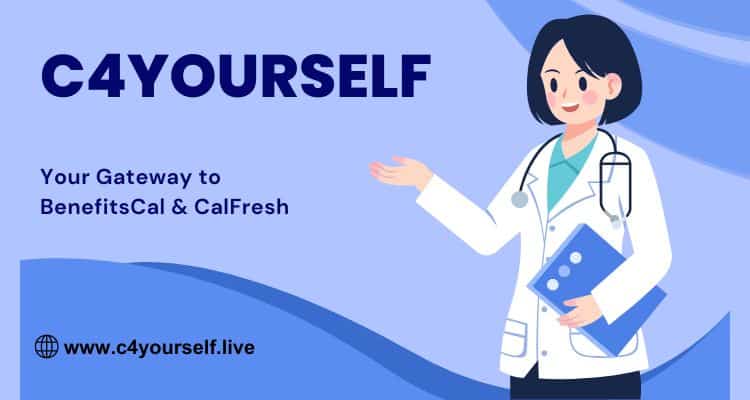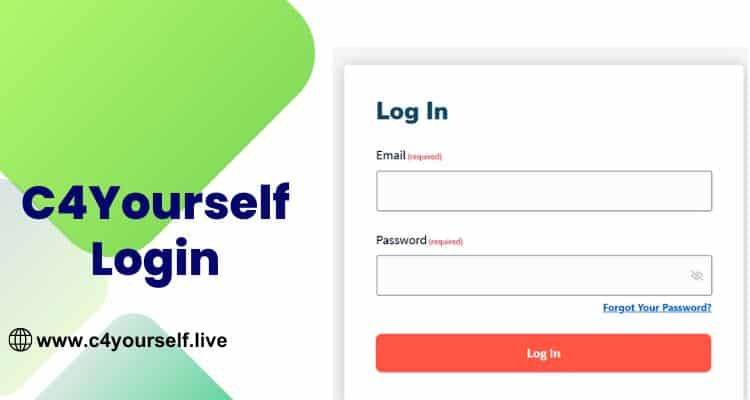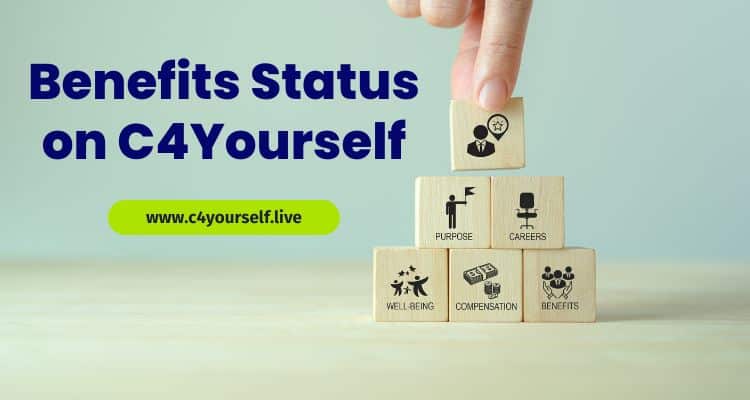History and Evolution of C4Yourself: In the realm of public assistance and social services, digital platforms have transformed how citizens access essential benefits. One such platform that played a crucial role in California’s social services system is C4Yourself. This article explores its origins, development, impact, and eventual transition into BenefitsCal.
The Genesis of C4Yourself

Early 2000s: The Need for Modernization
Before digitalization, California’s social services heavily relied on paper-based applications and in-person visits. This outdated system presented numerous challenges:
- Long wait times for applicants
- Inefficient use of caseworker resources
- High risk of errors in documentation
- Difficulty in tracking and managing cases
Recognizing these inefficiencies, a group of California counties collaborated to form Consortium IV (C-IV), an initiative aimed at modernizing benefit application processes through a centralized digital system.
Development and Launch of C4Yourself
2004-2006: System Design and Initial Development
The development phase focused on creating a system that would:
- Allow online applications for multiple benefit programs
- Provide a user-friendly interface for applicants and caseworkers
- Integrate data across various assistance programs
- Ensure compliance with state and federal regulations
2007: Official Launch
After years of planning and development, C4Yourself officially launched in 2007 across consortium counties. Key features included:
- Online applications for CalWORKs, CalFresh, and Medi-Cal
- Client portal to check application status
- Document upload capabilities
- Case management tools for county workers

Expansion and Enhancement
2008-2012: Growing Adoption
As more counties recognized the platform’s benefits, the C-IV consortium expanded. During this period:
- Additional counties joined the system
- Regular updates improved functionality and user experience
- Training programs were implemented for county staff and the public
2013-2015: Major Upgrades
With evolving technology, C4Yourself received significant enhancements:
- Mobile Responsiveness: Improved access via smartphones and tablets
- Enhanced Security: Strengthened measures for data protection
- Expanded Program Access: Integration of additional benefit programs
- Improved Analytics: Advanced reporting tools for better program management
The Affordable Care Act (ACA) and C4Yourself
2014: Adapting to Healthcare Reform
The implementation of ACA in 2014 required major updates to C4Yourself, including:
- Handling the surge of new Medi-Cal applications
- Integration with Covered California, the state’s health insurance marketplace
- Adapting to new eligibility rules and procedures
Challenges and Solutions
Addressing the Digital Divide
Not all Californians had access to the internet or digital literacy. To bridge this gap:
- Computer access points were set up in county offices and libraries
- Phone support was provided for those unable to use online services
- Community partnerships helped spread awareness and assistance
Balancing Automation with Personal Service
To ensure that technology did not remove the human element, counties implemented:
- In-person assistance for those preferring traditional methods
- Caseworker training to provide empathetic digital support
- Live chat features for real-time help

The Move Towards Statewide Integration
2016-2019: Planning for BenefitsCal
California aimed for a statewide benefits system, leading to the development of BenefitsCal, inspired by C4Yourself’s success. The goals were:
- A unified platform for all benefit programs
- Enhanced user experience with intuitive design
- Improved data sharing among counties
- AI-driven features for better service delivery
2020-Present: Transition and Legacy
By 2024, many counties had transitioned to BenefitsCal, marking a new era in California’s digital social services. Despite the transition, C4Yourself’s impact remains significant:
- Pioneered digital benefits access in California
- Served millions of residents over its lifespan
- Influenced the design and functionality of BenefitsCal
Key Achievements of C4Yourself
Improved Accessibility
- 24/7 access to benefit applications and account management
- Reduced in-person visits, saving time for applicants and caseworkers
Enhanced Efficiency
- Streamlined application process, reducing processing times
- Improved accuracy in eligibility determination
Cost Savings
- Lowered paperwork costs and manual processing expenses
- Reduced administrative overhead via automation
Data-Driven Decision Making
- Provided insights into program usage and trends
- Enabled targeted outreach and improved service delivery

Lessons for Future Public Assistance Systems
C4Yourself’s journey offers valuable lessons:
- Collaboration is Key: The consortium model allowed shared resources and expertise.
- Flexibility Matters: Adapting to policy changes (e.g., ACA) ensured long-term success.
- User-Centric Design: Regular updates based on user feedback improved accessibility.
- Bridging the Digital Divide: Offering alternative access methods remains crucial.
- Automation + Human Support: Technology should enhance, not replace, personal service.
Conclusion
The history of C4Yourself demonstrates the transformative power of technology in public services. From a consortium-driven project to shaping statewide benefits systems, C4Yourself set the stage for future innovations.
As California continues evolving its digital services, the lessons and achievements of C4Yourself will continue to influence and inspire advancements in public assistance delivery. This journey highlights how thoughtfully implemented digital tools can positively impact lives by making essential services more accessible and efficient.